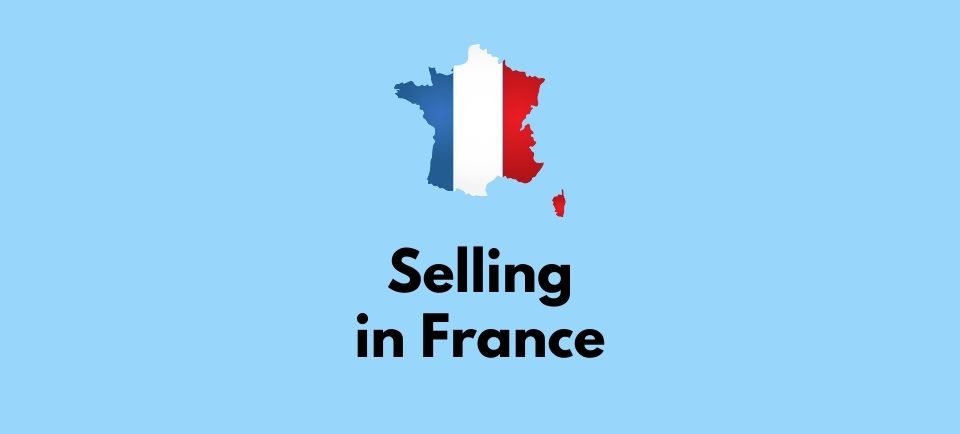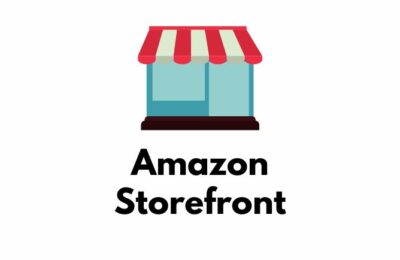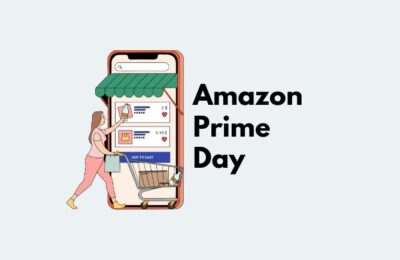Expanding your business to the French Amazon marketplace is a strategic move for any EU-based seller. France is one of the largest and most developed e-commerce markets in Europe, offering significant opportunities for growth. Below, we explore the reasons why France is a market worth considering for your business expansion.
Why France is a Good Market to Expand Into
1. Large and Growing E-Commerce Market
- France is the third-largest e-commerce market in Europe, after Germany and the UK, with a rapidly growing online consumer base. In 2023, the French e-commerce market was valued at over €140 billion, and it continues to grow annually.
- A large percentage of the French population shops online, making it a highly lucrative market for sellers. Over 80% of French internet users have made a purchase online, and this trend is expected to continue.
2. High Trust in Amazon as a Platform
- Amazon is one of the most popular e-commerce platforms in France, trusted by millions of consumers. French customers rely heavily on Amazon for its convenience, competitive pricing, and extensive product range.
- The trust in Amazon’s brand, combined with its strong logistics network, makes it easier for sellers to gain customer trust and succeed in the French market.
3. Cultural Affinity with Online Shopping
- French consumers are accustomed to shopping online, particularly for products such as electronics, fashion, books, and home goods. This cultural affinity with e-commerce is an advantage for sellers looking to penetrate the market.
- Additionally, French consumers appreciate high-quality products and are willing to pay a premium for items that meet their expectations, offering potential for higher profit margins.
4. Cross-Border Shopping
- French consumers are open to cross-border shopping within the EU, often seeking unique products or better deals from neighboring countries. This cross-border shopping trend means that as an EU seller, you can leverage your proximity and the EU’s single market to offer competitive shipping times and costs.
5. Strategic Location within the EU
- France’s central location within Europe makes it an ideal hub for logistics and distribution. It has well-developed infrastructure, including ports, highways, and a strong network of Amazon fulfillment centers, facilitating efficient distribution across France and beyond.
- Being part of the EU, there are no customs barriers or duties when selling to France from another EU country, simplifying the expansion process.
6. Opportunity to Diversify Revenue Streams
- By expanding into the French market, you diversify your revenue streams and reduce dependence on your home market. This diversification can help stabilize your business in the face of market fluctuations or economic changes in your primary market.
- France’s different shopping seasons, such as the January and July sales, provide additional opportunities to boost sales during times when other markets might experience slower demand.
Step 1: Understand the French Market
Before you start, it’s important to understand the French market. This includes researching:
1. Product Demand:
Example: French consumers have a strong preference for eco-friendly and organic products, especially in categories like cosmetics, household items, and food. Products labeled as “bio” (organic) or “écologique” (environmentally friendly) tend to perform better than non-labeled alternatives.
How to Apply: Consider how your products align with French consumers’ environmental concerns and adjust your offerings or marketing to highlight any eco-friendly attributes.
2. Competition:
Example: The French market has well-established local brands, particularly in fashion, beauty, and food. Brands like “L’Occitane” in skincare or “Lafuma” in outdoor gear are popular, so competing on brand strength might be challenging.
How to Apply: Focus on unique selling points like innovative features, better pricing, or superior quality to stand out from established local competitors.
3. Cultural Preferences:
Example: French consumers tend to appreciate detailed product descriptions and high-quality imagery. They prefer elegant, understated design and often value heritage and craftsmanship in products.
How to Apply: Make sure your product listings emphasize these aspects, providing detailed descriptions, highlighting craftsmanship, and ensuring that images reflect the product’s quality and design aesthetics.
Step 2: Register for Amazon Europe Marketplaces
As an EU-based seller, you can take advantage of Amazon’s Unified European Marketplaces account, which allows you to sell on all of Amazon’s European marketplaces, including France, with one seller account.
1. Log in to Your Amazon Seller Central Account:
Example: Once you’ve added France as a marketplace, you can sync your inventory across different EU marketplaces, but be aware that your products might perform differently in France compared to other countries due to cultural and economic differences.
2. Add France to Your List of Marketplaces:
Example: In France, categories like home and kitchen, beauty, and fashion are highly competitive, while other categories like outdoor equipment and organic food have seen significant growth.
How to Apply: Consider starting with categories that align with current trends in France or where competition is less intense, allowing you to establish a foothold before expanding to other product lines.
Keep in mind: when selling on Amazon in France you need to consider being able to guarantee speedy delivery, and in many cases also free returns. Therefore, if you plan on fulfillment by yourself (FBM), this is something you have to take into account.
3. Enable International Listings:
Example: When synchronizing prices across European marketplaces, consider the French VAT rate (20%) and the local pricing expectations, which might be different from other EU countries.
How to Apply: Adjust your prices accordingly to remain competitive while covering VAT and any additional costs associated with selling in France.
Step 3: Compliance with EU and French Regulations
Selling in France means adhering to both EU-wide and specific French regulations.
1. VAT Registration:
Example: Since 2021 the EU considers one EU-wide threshold of 10 000 EUR tax-free, instead of country-specific regulations. This means that if you sell above the tax-free limit, you’ll need to pay VAT in France. However, there is no need to specifically register for a French VAT number, unless you plan on physically store your merchandise in France and are a part of the PAN EU. Otherwise your store will be fine operating under the OSS VAT regulations and your homecountry will pay the appropriate amount to France, based on your statements.
Find out more about the OSS VAT regulations here.
2. Product Compliance:
Example: French regulations can be strict about product labeling, especially for food, cosmetics, and electronics. For example, food products need to include specific nutritional information in French, and electronics must comply with the EU’s WEEE directive.
How to Apply: Ensure your products meet all labeling and compliance requirements by consulting local legal experts or using Amazon’s compliance services.
Keep in mind: the French are highly environmentally conscious. It may be required for you to consider the French Packaging Act when shipping your items to the country.
3. Language Requirements:
Example: French law requires that all product information, including manuals and customer service communications, be available in French. This includes translations of any labels or instructions that might come with your product.
How to Apply: Invest in professional translation services to ensure your product listings and any accompanying materials are accurately translated into French.
Step 4: Create and Optimize Your Listings
Creating and optimizing your listings for the French market is crucial to attracting customers.
1. Translate Product Listings:
Example: A literal translation might not convey the intended meaning or appeal to French consumers. For instance, using idiomatic expressions that are common in France can make your listings more relatable.
How to Apply: Use localization services that adapt the language, cultural references, and even measurement units (e.g., centimeters instead of inches) to suit the French market.
2. Optimize Listings for SEO:
Example: French customers might use different search terms than those used in other countries. For instance, “téléphone portable” is more commonly searched than “smartphone” in France.
How to Apply: Conduct keyword research specific to the French market and optimize your listings with those terms to improve visibility.
3. Pricing Strategy:
Example: French consumers are known for their price sensitivity, especially when it comes to everyday items. However, they are also willing to pay more for premium products or those that offer perceived added value.
How to Apply: Develop a pricing strategy that reflects the local market’s expectations, offering competitive pricing on standard items while justifying higher prices for premium products with strong value propositions.
Keep in mind: your certain fixed costs may be higher than in your home country. This specifically applies to logistics, especially when considering managing your inventory through FBA, where the cost of logistics may be up to 100% higher for some types of packages.
Step 5: Logistics and Fulfillment
Choosing the right logistics and fulfillment option is crucial for your success.
1. Fulfillment by Amazon (FBA):
Example: French consumers highly value fast shipping. Amazon Prime is particularly popular in France, so using FBA can help you meet the demand for quick delivery, which is often a deciding factor in purchasing.
How to Apply: Utilize Amazon’s FBA services to ensure your products are eligible for Prime, which can significantly increase your chances of winning the Buy Box and attracting more customers.
Keep in mind: in addition to the aforementioned possible increase in logistic costs, if you choose to store your inventory in for example Germany, your packages may take longer to deliver to France. Should you choose to operate under the Pan-European VAT option, you may have to consider obtaining VAT registrations in Poland, France, Germany, the Czech Republic, Italy, and Spain.
2. Fulfillment by Merchant (FBM):
Example: While FBM gives you control over the shipping process, it can be challenging in France due to customer expectations for fast and reliable delivery.
How to Apply: If you choose FBM, partner with a reliable logistics provider in France that can offer competitive shipping rates and delivery times to meet customer expectations.
3. Pan-European FBA:
Example: By enrolling in Pan-European FBA, your products can be stored in multiple fulfillment centers across Europe, including France. This reduces shipping times and costs, which is particularly appealing to French consumers who expect quick deliveries.
How to Apply: Consider using Pan-European FBA to streamline your logistics and offer faster delivery times, enhancing customer satisfaction in France.
Step 6: Marketing and Advertising
To succeed on Amazon France, you’ll need to invest in marketing and advertising.
1. Amazon Sponsored Products:
Example: In France, certain keywords like “bio” (organic) and “artisanat” (craftsmanship) can be more effective due to the high demand for organic and locally crafted products.
How to Apply: Tailor your PPC campaigns by targeting these popular French keywords and monitor their performance to maximize your ad spend.
2. Deals and Promotions:
Example: French consumers are attracted to promotions, especially during key shopping periods like the French “soldes” (sales) seasons in January and July.
How to Apply: Schedule your promotions to coincide with these sales periods and offer deals that appeal to the French market’s love for bargains and discounts.
3. Social Media and External Marketing:
Example: Platforms like Instagram and Facebook are popular in France, particularly for discovering new brands and products. French consumers are also responsive to influencer marketing.
How to Apply: Use French influencers to promote your products and run targeted social media campaigns that appeal to French aesthetics and values.
Step 7: Customer Service and Reviews
Providing excellent customer service is key to maintaining a good seller reputation.
1. Customer Support:
Example: French customers expect timely responses and solutions in their native language. Offering customer service in French is crucial to maintaining high satisfaction levels.
How to Apply: Ensure you have French-speaking customer service representatives available or use Amazon’s customer service for FBA orders to handle inquiries professionally.
2. Manage Reviews:
Example: French consumers tend to leave detailed reviews, focusing on the quality and usability of the product. They often appreciate transparency and honesty in seller responses.
How to Apply: Actively encourage positive reviews by following up with satisfied customers and promptly addressing any negative feedback in French, showing your commitment to customer satisfaction.
Step 8: Monitor and Optimize Your Performance
Continuous monitoring and optimization are essential for long-term success.
1. Analyze Sales Data:
Example: You might find that certain products perform better in France than in other EU markets due to local preferences. For instance, organic skincare products might see higher sales in France compared to synthetic alternatives.
How to Apply: Regularly review your sales data to identify trends specific to the French market and adjust your inventory, marketing strategies, and pricing accordingly.
2. Expand Product Range:
Example: Once established, consider expanding into other categories that are popular in France, such as home decor, artisanal products, or gourmet food items, which have a strong market presence.
How to Apply: Use your sales data and market research to identify potential new product lines that align with French consumer preferences.
3. Stay Compliant:
Example: French regulations and consumer laws can change, particularly in areas like environmental standards or data protection. Staying informed will help you avoid penalties.
How to Apply: Regularly check for updates on French regulations and adjust your practices to remain compliant, using resources like Amazon’s compliance tools or consulting with legal experts.
Final Thoughts
Selling on Amazon France offers a great opportunity for EU sellers to expand their reach and grow their business. By understanding the specific nuances of the French market and tailoring your approach accordingly, you can position your products effectively, meet local consumer expectations, and ultimately achieve success in this thriving e-commerce landscape.





